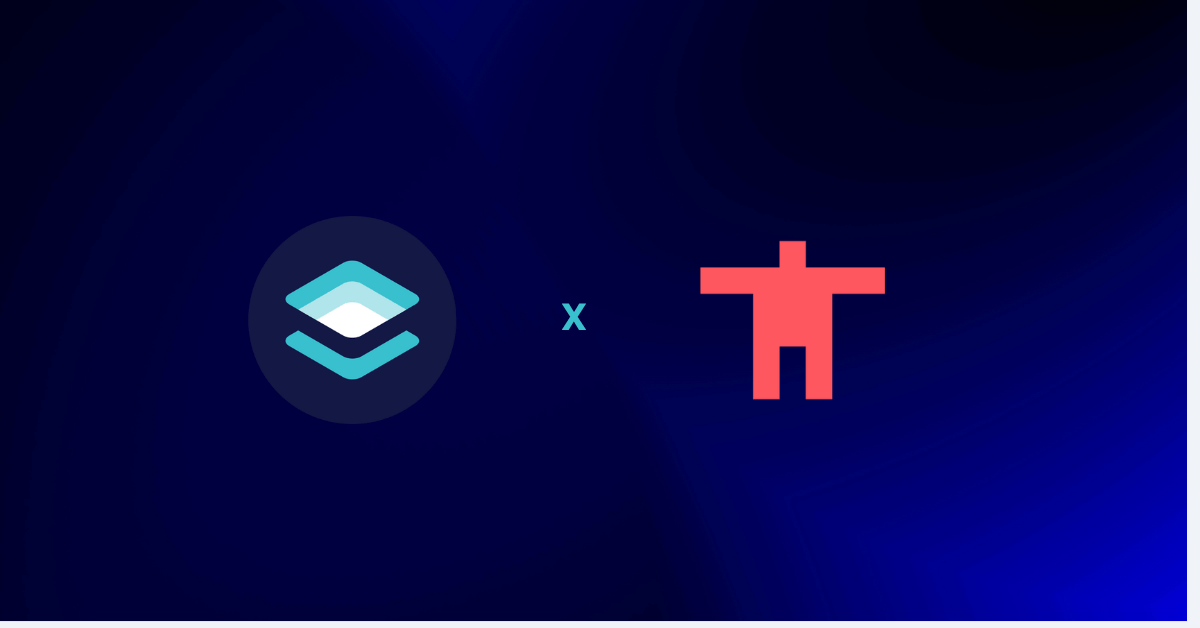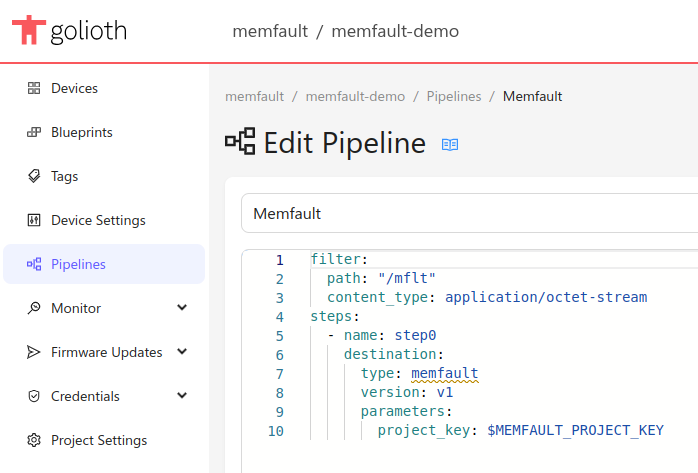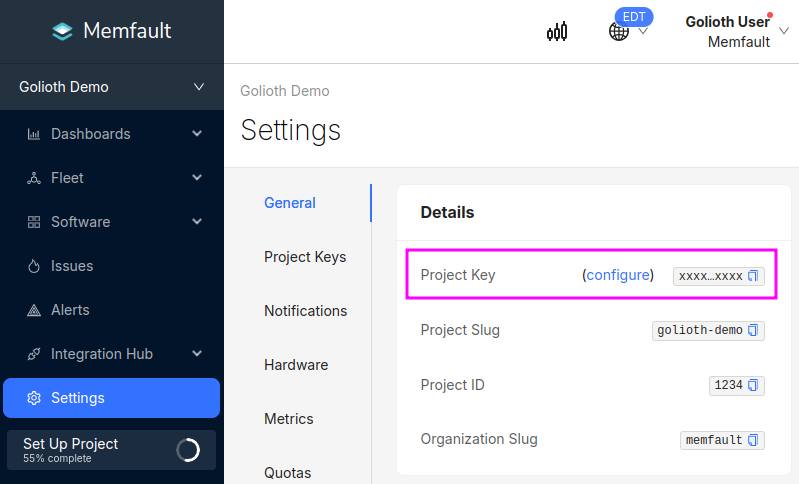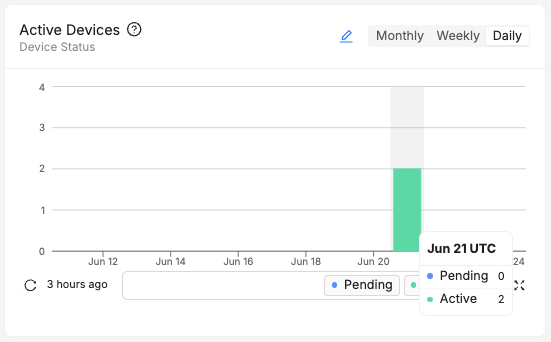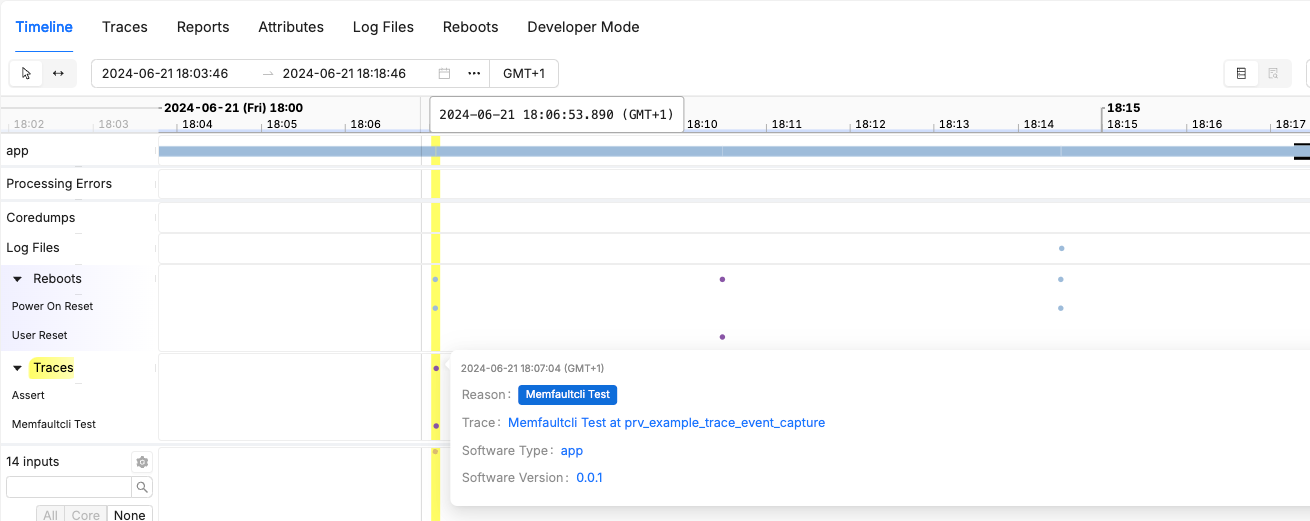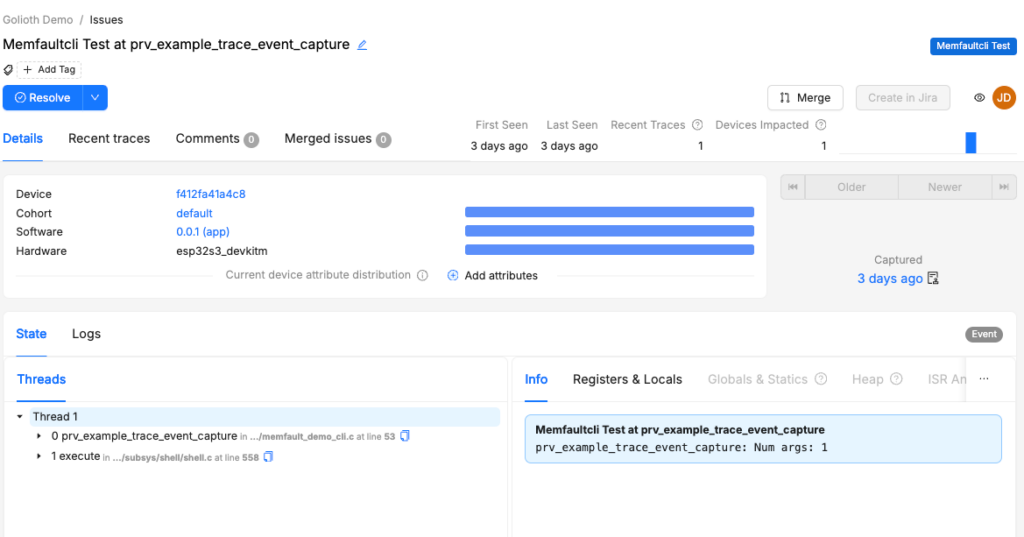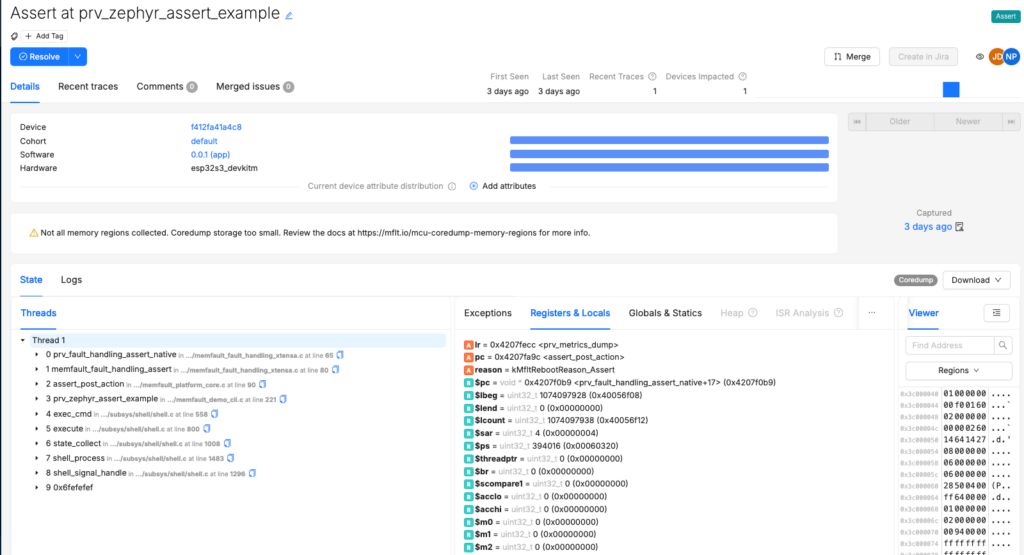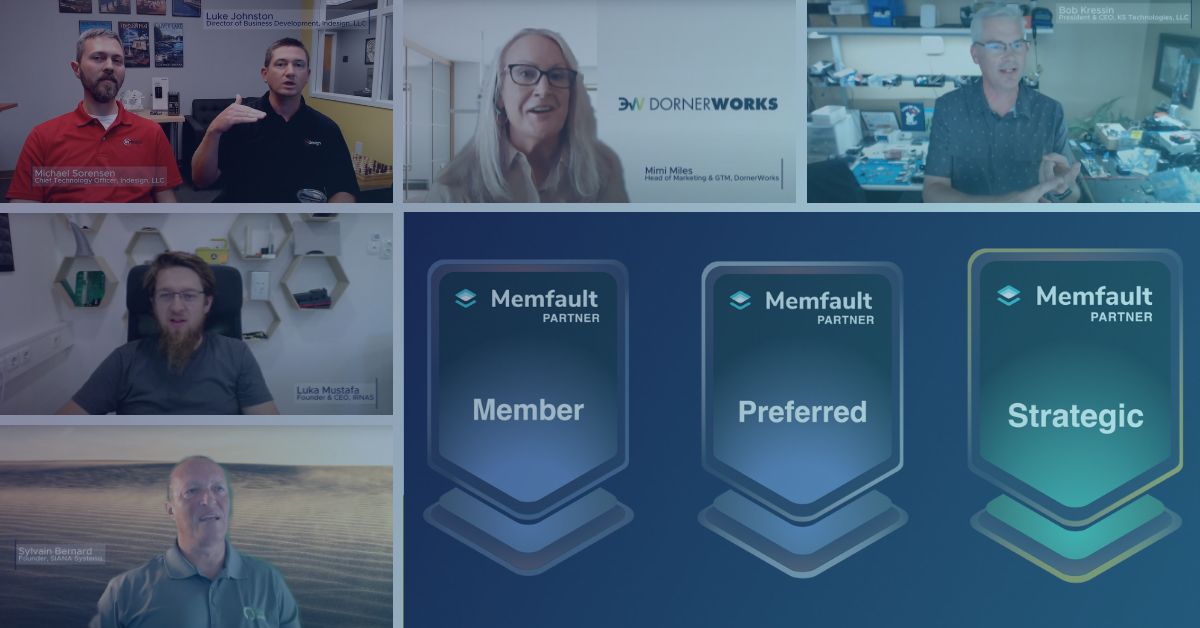Share
Connectivity is one of the most common challenges in an IoT development project, especially when devices are relying on bandwidth-constrained or metered networks. And yet, being able to collect great data from these devices is critical to their ongoing security, reliability, and performance in the field. Streamlining the process of getting data from a device and into cloud services like Memfault provides welcome relief to these highly complex projects.
That’s why we are excited to announce a new integration with our technology partner Golioth. Golioth helps IoT development teams create products faster and more easily by providing device management, data routing, and application services. Memfault is delighted to be the first out-of-the-box integration for Golioth’s new low-code data routing tool, Pipelines.
We are optimistic about how this new integration can further simplify the process of getting great observability data from constrained devices and into Memfault. We share Golioth’s passion for enabling IoT development teams with great tools to improve the experience of building these complicated products. I can’t wait to see our mutual customers benefit from the streamlined technical connection between our products.”
François Baldassari | Co-Founder and CEO | Memfault
Benefits
With Pipelines, Golioth users will be able to route data directly to Memfault with ease. Using Pipelines allows developers to:
- Maximize the efficiency of their devices
- Report data to one destination (Golioth)
- Utilize Pipelines to route data to multiple different end destinations easily
At Golioth, we’re dedicated to seamlessly routing IoT data, ensuring our customers can harness its full potential. With Memfault’s robust observability and device health solutions, our integration is a natural fit. Healthy devices are crucial for generating accurate data, and this collaboration addresses a core need our mutual customers and partners have been requesting. Together, Golioth and Memfault are empowering businesses to achieve new levels of efficiency and insight.”
Jonathan Beri | Founder and CEO | Goliot
Making it easy and efficient to build great IoT devices
Memfault and Golioth care deeply about giving embedded development teams modern tools and infrastructure to ensure building great connected devices is easy and efficient. Using Pipelines to route data into Memfault, developers can get high quality data about the health, performance and reliability of their fleet with the lowest possible impact on the device itself. Once this data is in Memfault, developers can use it to prioritize problems, identify opportunities for enhancements, and prepare to ship targeted updates to their fleet.
Golioth’s IoT development platform in combination with Memfault’s Observability solution provides engineering teams with the tools they need to develop, test, deploy and maintain great connected devices.
Check out this video, where Noah Pendleton and Dan Mangum discuss how Golioth’s connectivity enables more devices to leverage the observability features of the Memfault platform. They also walk through how to set up the integration and start using it in firmware applications.
How the Memfault and Golioth Pipelines integration works
Golioth’s service enables efficient and secure bi-directional data transfer over CoAP. Using the Golioth uplink, a device can easily send and receive data with other cloud systems without building that complexity into the device itself, which is excellent for conserving device resources, simplifying system design, and making the implementation easier.
Golioth’s recently released Pipelines feature allows routing data to several pre-configured external destinations, like Azure/AWS/Google Cloud, or generic webhooks. One of the supported out-of-the-box destinations routes data to Memfault.
Getting started with the Memfault and Golioth Pipelines Integration
Getting started is super simple and in only a few steps, you will be routing data right into Memfault.
First, configure the Memfault pipeline in the Golioth console. You can follow this deep link to jump right to the Golioth console pipeline editor (check out the Golioth docs for details and a copyable snippet).
Next, set the MEMFAULT_PROJECT_KEY from Memfault as a Pipeline Secret. This Project Key is used to route data to the correct Memfault Project.
Golioth is now set up to forward data to Memfault!
The last step is to enable the chunk transmission on the device itself. This is done with a few lines of C code, shown in the snippet below:
Check out the Golioth + Memfault’s example app for a full example project that sends Memfault chunks through the Golioth Pipeline to Memfault.
Once your device successfully reports data into Memfault you will start to see activity displayed in our Overview dashboard in Memfault. In the chart example below we can see a count of active devices.
We can also now see our test device in Memfault’s device search.
And clicking into the device we will see a record of activity happening on the Device Timeline.
By clicking through on the trace event in the timeline we can see the details of that trace.
We can also see issues sorted on Memfault’s Overview dashboard and use this to jump into our highest impact issues. In this case we can see our trace example and also a crash example (Assert).
Clicking into the Assert we can see a full coredump collected from the device.
Want to try it out?
You can read more about how to get set up over in our technical documentation. And what’s more, now through August 31st, 2024, Golioth is offering a $1000 credit for all existing Memfault customers who sign with Golioth and stream data to Memfault. Reach out to [email protected] and mention the Golioth Memfault credit to take advantage of this limited time offer.
We can’t wait to see customers try out this new integration. If you have questions about how to take advantage of this new integration, please reach out to the team and we would be happy to help.
Better tools, better data, better IoT products
The age of embedded development teams having to work with bad data and outdated tools is at an end. Building IoT products is extremely complicated, and this new integration is one more way we’re arming IoT development teams with great tools to make the experience more efficient.
And if you haven’t seen the rest of our Launch Week announcements yet, you can see them all at memfault.com/launch-week. We are enabling teams to collect better data with Product Analytics, integrate Memfault on to their devices faster with our QuickStart program, and route data to Memfault more efficiently with this Golioth integration.
